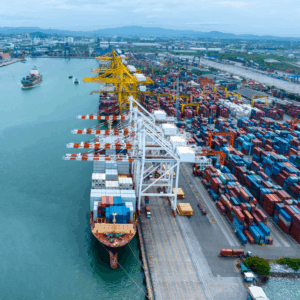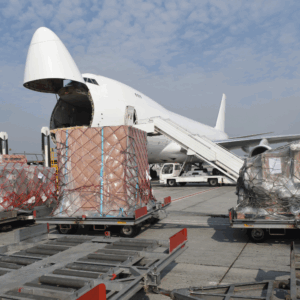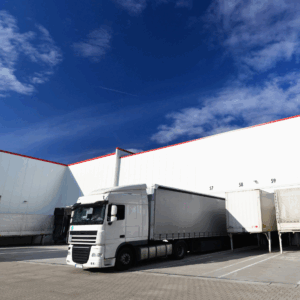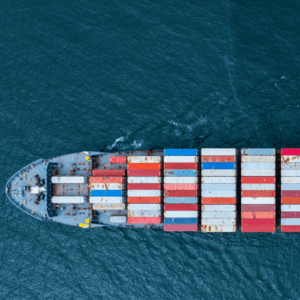
Shipping products to Amazon fulfillment centers (FCs) is far more than simply boxing items and sending them out. From detailed labeling requirements to international customs documentation, every step must align precisely with Amazon’s logistics standards. Even minor mistakes can lead to rejected shipments, delays in stocking, or additional costs due to fines and warehousing surcharges.
The evolution of digital freight systems, the rise in cross-border e-commerce, and the integration of platforms like Amazon Global Logistics (AGL) have added new layers of opportunity and complexity to the freight forwarding industry. To thrive in this environment, sellers must master logistics operations and collaborate with experienced freight partners to ensure seamless delivery.
This article provides an in-depth examination of how FBA logistics operate. Using official documentation—including “Shipment Prep and Transportation,” “Amazon Freight Carrier,” and “Interplay between Amazon Store and Logistics”—we explain how to select the appropriate freight method, prepare shipments correctly, comply with international requirements, and utilize logistics as a competitive advantage.
What Is FBA and How It Works
According to Amazon’s operational documentation, FBA is a complete end-to-end fulfillment system:
“A logistics program where sellers store inventory in Amazon’s fulfillment centers, and Amazon picks, packs, ships, and provides customer service for those products.”
The FBA cycle includes:
- Seller Account Creation – Registration on Seller Central is required.
- Product Listing – You list products individually or via bulk upload (Excel or API).
- FBA Conversion – Products must be marked as Fulfilled by Amazon.
- Shipment Creation – Generate plans that assign inventory to different FCs.
- Inventory Prep & Labeling – Items must meet strict barcode and packaging requirements.
- Shipment & Replenishment – Use partnered carriers or freight forwarders for delivery.
- Ongoing Management – Monitor inventory levels, analyze returns, and adjust pricing to optimize profitability.

This makes freight forwarding a core part of the business. Mislabeling, damaged boxes, or non-standard pallets can delay receiving or incur chargebacks. Many sellers opt to work with FBA-experienced forwarders who ensure packaging, documentation, and delivery windows are precisely managed.
Shipment Preparation and Compliance Requirements
Proper shipment preparation is critical to avoid operational delays. Based on the “Shipment Prep and Transportation” document, Amazon evaluates every shipment on four fronts: packaging, labeling, documentation, and carrier scheduling.
Packaging Rules
- Item packaging: Must be sealed, clean, and protective.
- Cartons: Standard double-walled corrugated boxes, weighing under 50 lbs each unless otherwise specified.
- Pallets: Must conform to GMA 4-way access standard, with a max height of 72 inches.
“Pallets that are damaged or exceed height limits will be rejected at the dock.”
Labeling Protocol
- FNSKU barcodes on every unit.
- Outer carton labels must be printed from Seller Central.
- Pallet labels on all sides, using Amazon’s template.
Documentation
- Packing slip
- Bill of Lading (BOL)
- Advance Shipment Notification (ASN) uploaded before the carrier appointment

Carrier Requirements
Amazon only receives shipments that arrive via approved methods. For LTL and FTL shipments, appointments through Carrier Central are mandatory. For ocean freight, post-deconsolidation delivery must still align with Amazon’s booking system.
Amazon Freight Carrier vs Freight Forwarder
Amazon is not a traditional freight carrier. Instead, it connects sellers to logistics providers through services like Amazon Global Logistics (AGL) and Amazon Freight.
“Amazon’s role is to facilitate freight movement but not operate it. Forwarders and trucking firms still handle the physical transport.”
(Amazon Freight Carrier, 2023)
While Amazon offers shipping rates and partnerships, limitations include:
- Lack of flexibility in scheduling
- No assistance with international documentation
- Limited custom handling or compliance checks
That’s where freight forwarders come in. They manage your entire logistics process from origin to Amazon FC delivery:
- Booking air, ocean, or rail cargo
- Preparing all customs and export/import documentation
- Ensuring Amazon-compliant packaging
- Providing real-time tracking
- Handling delays, holds, or damages
Sellers using forwarders like ExFreight gain complete control, visibility, and operational consistency, especially when shipping across borders or combining inventory from multiple suppliers.
Freight Modalities: Air, Ocean, and LTL
Choosing the proper transport mode depends on your product type, volume, urgency, and margin.
Air Freight
- Best for light, high-value products
- Faster transit (3–7 days)
- Higher cost per kg, but fewer packaging requirements
Ocean Freight (FCL & LCL)
- Best for bulk shipments and low-margin goods
- Cheaper per unit but slower (20–40 days)
- FCL offers more control, while LCL (shared container) is cost-effective for smaller loads
LTL Freight (Less-than-Truckload)
- Ideal for domestic distribution to FCs
- Amazon mandates appointment bookings and BOL compliance
- Can result in longer transit due to hub transfers
“LTL is effective for scheduled deliveries to Amazon, but pallet integrity and labeling must be flawless.”
Strategically combining air for fast-moving SKUs and ocean for restocking allows cost optimization.
How E-Commerce Is Reshaping Logistics
The article “Shipping News: The Implications of Electronic Commerce for Logistics and Freight Transport” outlines major shifts caused by digital commerce:
“E-commerce reduces traditional bulk transport and increases parcel and mixed-load shipping, requiring a shift to multi-modal and time-sensitive logistics.”
Amazon’s network exemplifies this shift. Its hyperlocal FC footprint, focus on last-mile delivery, and use of real-time data have changed how freight flows globally.
Freight systems must now:
- Handle micro-shipments
- Integrate with inventory APIs
- Automate customs and compliance documentation
- Offer visibility dashboards
This transformation increases reliance on digital freight forwarders like ExFreight, which allow quoting, booking, tracking, and compliance from a single platform.
Global Expansion via FBA
The document “Internacionalización a través del comercio electrónico” offers guidance for sellers targeting the U.S. market via Amazon:
“La logística debe adaptarse a los requisitos aduaneros, fiscales y de recepción de Amazon.”
Key considerations:
- Incoterms: Use FOB for control; avoid EXW unless working with a reliable forwarder.
- Customs Declarations: Products must be correctly classified using HS codes.
- Special Permits: Certain items may require authorization from the FDA, USDA, or FCC.
- Delivery Timeframes: Amazon penalizes delays; compliance is mandatory.
The report recommends:
- Using local prep centers near Amazon FCs
- Splitting shipments across multiple FCs for faster intake
- Monitoring Amazon’s updates on accepted carriers and customs rules
Sellers in Europe or Latin America must partner with experienced freight providers who can bridge legal, logistical, and platform-specific requirements.
Documentation and Operational Tips
Shipping internationally to Amazon involves strict documentation:
- Commercial Invoice
- Packing List
- SLI (Shipper’s Letter of Instruction)
- BOL (Bill of Lading)
- ISF Filing (for ocean freight into the U.S.)
- Certificate of Origin (if claiming trade agreement benefits)
Amazon also provides templates:
- Weight Label (Appendix 3)
- Expiration Guidelines (Appendix 4)
- Euro Pallet Dimensions (Appendix 6)
- Pallet Loading Rules (Appendix 7–11)
Other practical tips:
- File an ISF at least 72 hours before departure to avoid fines.
- Use licensed customs brokers to manage duty classifications.
- Prepare for random customs inspections (VACIS, intensive exams).
- Ensure terminal fees and storage are paid on time.
- Inspect shipments on delivery; note damages immediately.
FAQs
Do I need a freight forwarder for Amazon FBA?
Yes, especially for international or pallet shipments. Forwarders manage documentation, compliance, and delivery windows.
What are Amazon’s labeling rules?
Each unit must have a scannable FNSKU. Cartons and pallets must use Amazon-generated labels.
Do you know if I can use LTL for delivery?
Yes, but you must book through Carrier Central, use approved carriers, and submit ASN and BOL.
What’s a Carnet?
A Carnet allows temporary imports without duties. Use it for trade shows or demo inventory.
How do I avoid storage penalties?
Clear customs and arrange delivery before free time expires (24–48 hours for air; 5–10 days for ocean).
Amazon FBA simplifies customer-facing fulfillment but demands precision on the backend. Sellers must master logistics—from shipment prep to global freight—to avoid fines, rejections, or operational delays. With the right freight forwarder, you gain visibility, reliability, and compliance in every step.
ExFreight offers integrated solutions tailored to Amazon sellers. Whether you’re shipping a pallet from New Jersey or a container from Shenzhen, we handle the process from port to Prime shelf—digitally, transparently, and on time.
Please feel free to contact ExFreight today for a custom freight quote.






Leave A Comment
You must be logged in to post a comment.